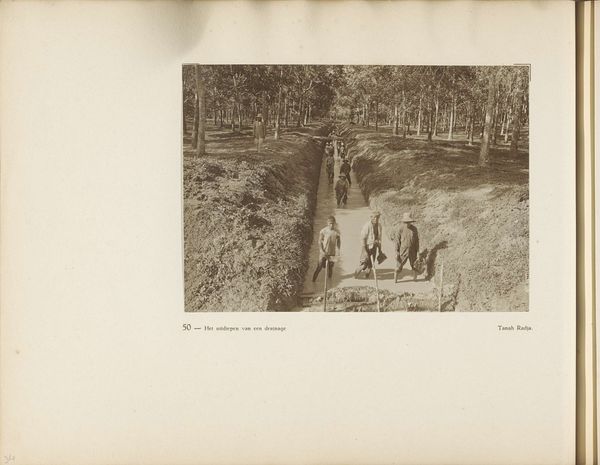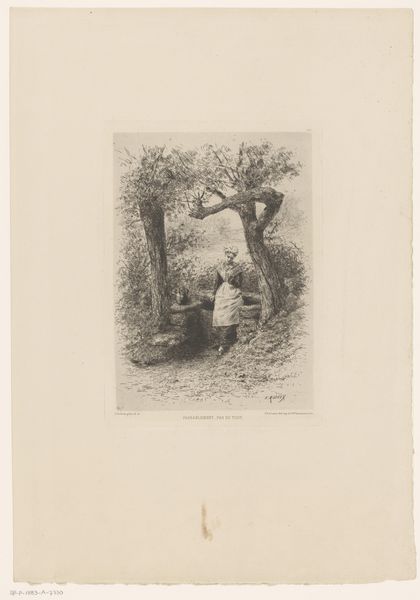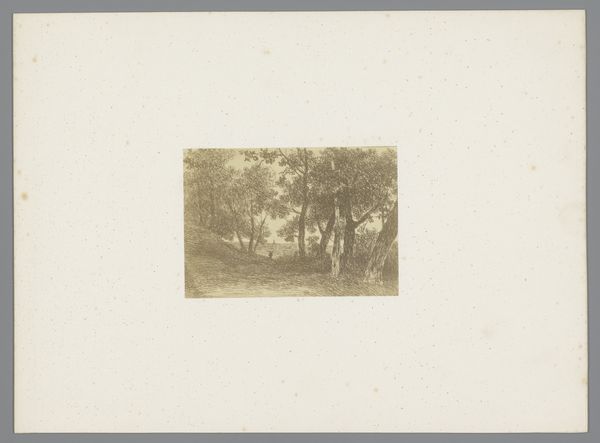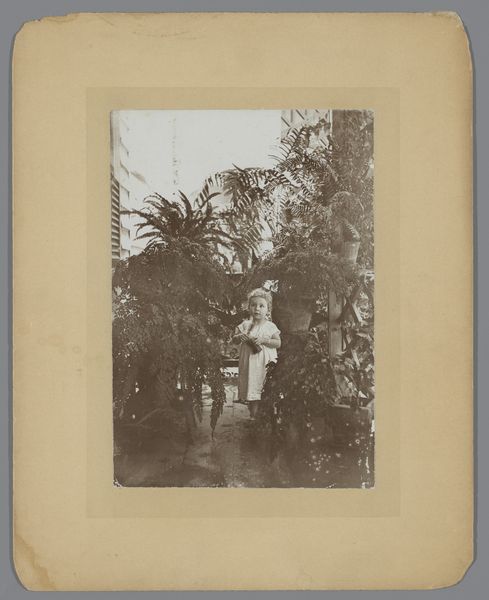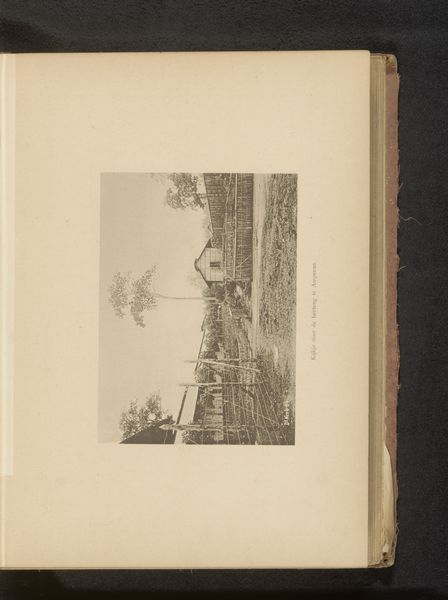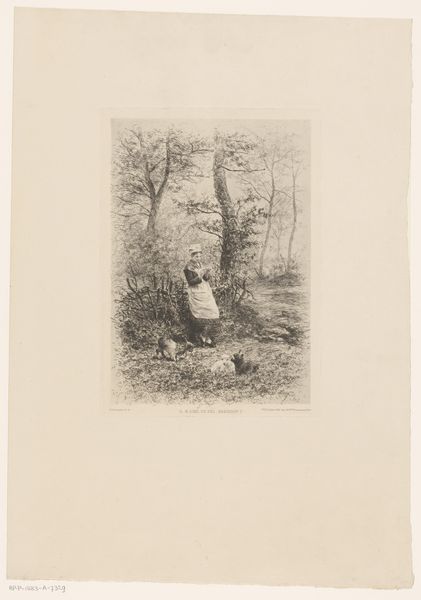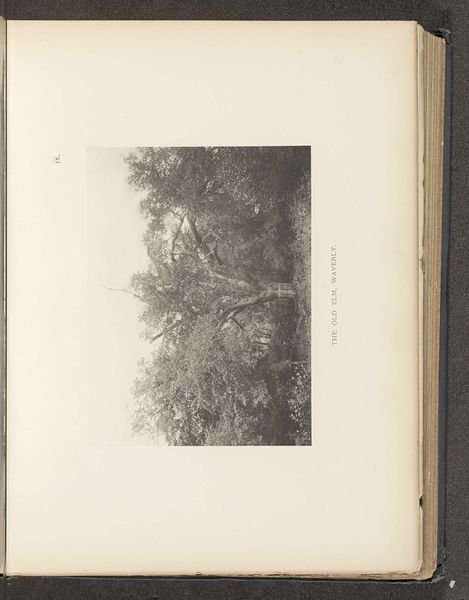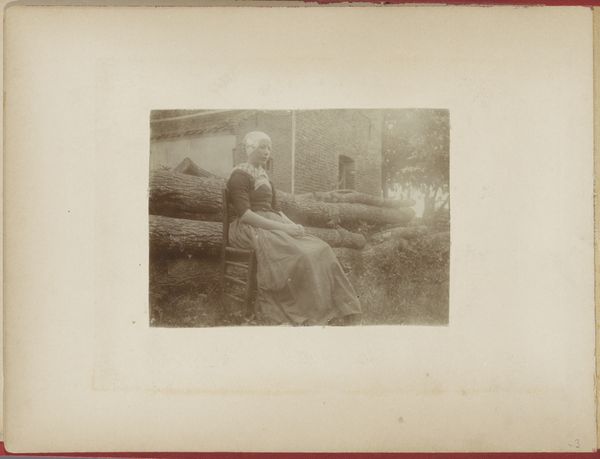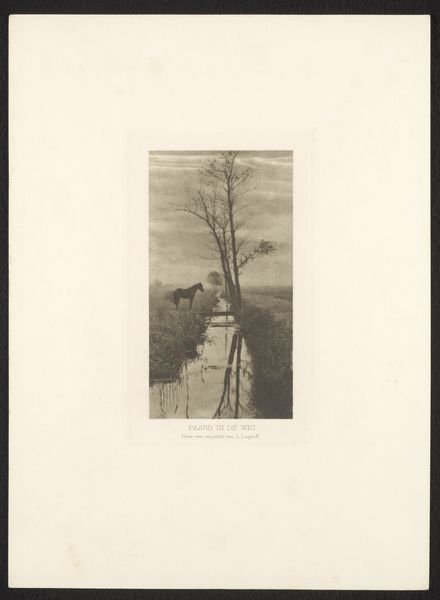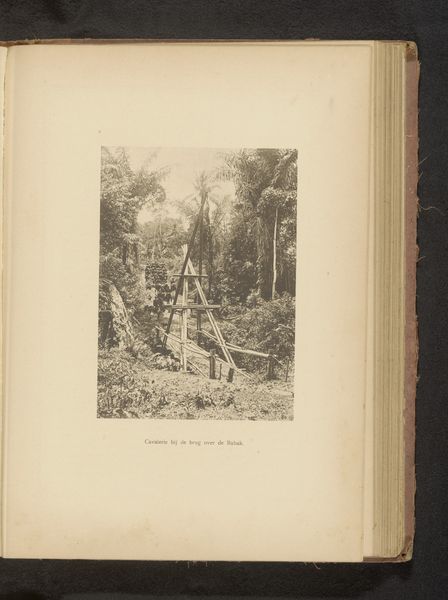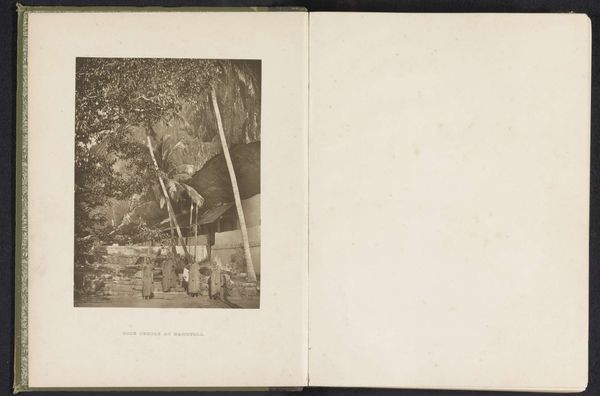
Pagina 53 van fotoboek van de Algemeene Vereeniging van Rubberplanters ter Oostkust van Sumatra (A.V.R.O.S.) c. 1924 - 1925
0:00
0:00
print, photography, gelatin-silver-print
# print
#
landscape
#
photography
#
orientalism
#
gelatin-silver-print
#
genre-painting
Dimensions: height 240 mm, width 310 mm
Copyright: Rijks Museum: Open Domain
Curator: Here we have a fascinating gelatin silver print dating from around 1924-1925, “Page 53 from the photo book of the General Association of Rubber Planters on the East Coast of Sumatra” or "A.V.R.O.S.". Editor: My first impression is one of stark labor amidst a manufactured landscape. There's a loneliness to the figure carefully scoring the rubber tree. Curator: Absolutely. The image is from a photo book commissioned by a Dutch company operating in Sumatra. It served as propaganda, idealizing colonial enterprise and agricultural production in the Dutch East Indies, present-day Indonesia. We can see a bit of orientalism here, too, in its staging of this labor. Editor: Right, the very material is the product of extraction. Rubber, this highly desirable material for the colonizers, acquired through intensive labor. How are the workers presented and what exactly is the role they play in it? What conditions made the making of such picture possible, not just technically but also culturally? Curator: The image itself becomes a commodity, then, reinforcing a certain power dynamic. It presents a very curated view, omitting, for instance, the environmental impacts of these rubber plantations, not to mention any labour conflicts that took place during its making. Editor: Precisely. Notice the uniform rows of trees receding into the distance. This isn't a natural forest, but an industrially organized landscape. The photograph's technical clarity almost masks the underlying power dynamics at play. It is indeed an interesting reflection on both the rubber industry and how it portrays itself through photography. Curator: And indeed this reinforces a global supply chain that benefits from cheap labor and resources at the expense of local populations and ecosystems. So it has considerable cultural value to learn about its role and the effects on both ends of production. Editor: It really does. Seeing the actual process helps us think about our current habits of production and consumption, questioning our present reality by examining its material history. Curator: Well, thinking about both the social and material histories at play enriches our viewing. Editor: Agreed. A poignant reminder to look beyond the surface of seemingly benign images.
Comments
No comments
Be the first to comment and join the conversation on the ultimate creative platform.
